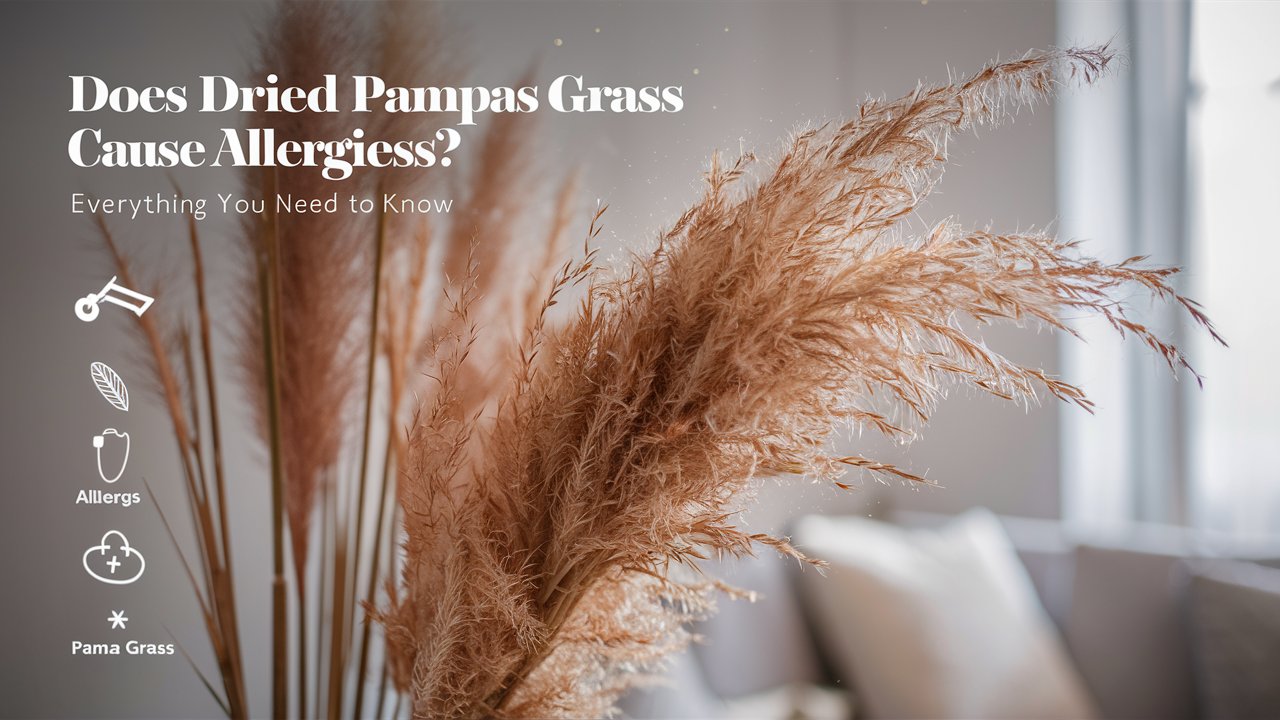Introduction
Does dried pampas grass cause allergies? This is a common question for those looking to incorporate this trendy decorative element into their homes. In this comprehensive guide, we will explore the potential allergenic properties of dried pampas grass and provide tips for minimizing any associated risks.
What is Dried Pampas Grass?
Dried pampas grass is a popular home decor item known for its feathery plumes and natural aesthetic. Originating from South America, this tall grass (Cortaderia selloana) is often used in floral arrangements and as a standalone decoration in vases.
Does Dried Pampas Grass Cause Allergies?
Yes, dried pampas grass can cause allergies in some individuals. Like many plants, it can produce pollen and dust, which are common allergens. When pampas grass is dried, these particles can become more concentrated and easily airborne, potentially triggering allergic reactions.
Common Allergens in Dried Pampas Grass
Pollen
Pollen is the most common allergen associated with dried pampas grass. While the drying process reduces the moisture content, it does not eliminate pollen, which can still be released into the air.
Dust
Dust accumulation is another concern. Dried pampas grass can collect dust over time, which can exacerbate allergies, particularly in those sensitive to dust mites.
Symptoms of Allergies from Dried Pampas Grass
Symptoms of allergies from dried pampas grass may include:
- Sneezing
- Runny or stuffy nose
- Itchy or watery eyes
- Coughing
- Wheezing
- Skin rashes
These symptoms can range from mild to severe, depending on individual sensitivity and exposure levels.
How to Minimize Allergy Risks
Proper Cleaning
Regularly dusting your dried pampas grass can help reduce the risk of allergen buildup. Use a soft brush or feather duster to gently remove dust without damaging the plumes.
Placement
Avoid placing dried pampas grass in high-traffic areas or near HVAC vents where air movement can disperse allergens. Consider keeping it in less frequented spaces to minimize exposure.
Sealing
Spraying dried pampas grass with a clear, matte sealant can help contain pollen and dust particles, reducing the risk of allergens becoming airborne.
Alternatives to Dried Pampas Grass
If you’re concerned about allergies, consider these hypoallergenic alternatives:
Artificial Pampas Grass
Artificial pampas grass offers the same aesthetic appeal without the risk of allergens. High-quality faux versions can look remarkably realistic.
Other Dried Flowers
Dried flowers like lavender, eucalyptus, and baby’s breath are less likely to cause allergies and can provide a similar decorative effect.
Conclusion
In summary, while dried pampas grass can cause allergies for some individuals, there are steps you can take to minimize the risks. Regular cleaning, careful placement, and considering alternatives can help you enjoy the beauty of this decorative element without the discomfort of allergy symptoms.
FAQs
Does dried pampas grass produce a lot of pollen?
Dried pampas grass can retain pollen even after the drying process. Regular cleaning and using a sealant can help reduce pollen release.
Can I be allergic to dried pampas grass even if I’m not allergic to fresh grass?
Yes, dried pampas grass can still cause allergies due to the presence of pollen and dust. Sensitivity varies among individuals.
How often should I clean my dried pampas grass?
It’s advisable to dust your dried pampas grass at least once a week to prevent the buildup of allergens.
Are there any specific brands of artificial pampas grass recommended for allergy sufferers?
There are many high-quality artificial pampas grass options available. Look for brands that emphasize hypoallergenic materials and realistic appearances.
Can dried pampas grass be harmful to pets?
Dried pampas grass is not toxic to pets, but it can cause gastrointestinal upset if ingested. Additionally, pets may be affected by the same allergens as humans.


